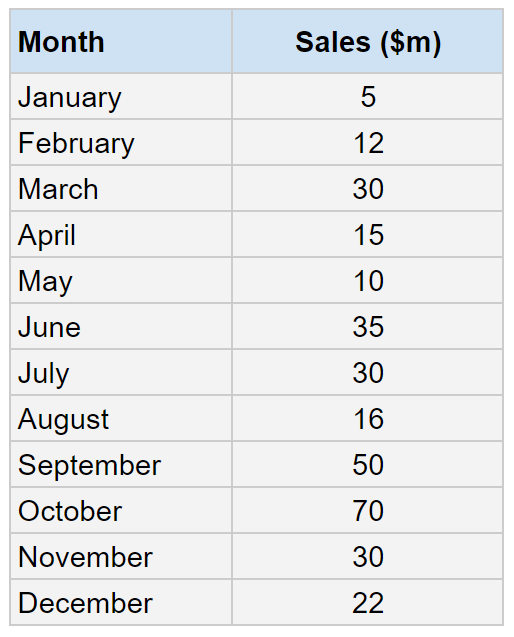Unit 4.3 Sales Forecasting (HL)
The predictions are all wrong!
The CEO of Link (a Chinese car company) has asked for reliable predictions (sales forecasting)! The CEO wants accurate data to smooth out problems of interdependence between departments! Without knowing accurately what demand will be, the production department cannot order and plan effectively!
Complaints have been that not enough materials are ordered through the purchasing department for production or that components arrive too late! Another complaint has been the success of a recent marketing campaign has led to, too many enquiries about Link cars and not enough sales department staff to field and reply to customers!
The sales team and market research team tried various techniques to predict future sales but haven’t got it quite right yet!
First of all, extrapolation was tried, but the numbers were too high! Secondly, market research was tried, but it was too expensive and didn’t account for rapid changes in price or sentiment towards the brand! The third and final technique used to predict sales got closest to accurate forecasts! This was, ‘time series analysis‘.


The predictions are all wrong!
The Chinese EV market has been heavily subsidized by the government, which has attracted a range of new players (competitors) into the market. Whilst this has been great for consumers, competition between manufacturers has intensified! Each manufacturer now is engaged in lowering costs, lowering prices and high volumes of advertising in an attempt to increase unit sales of cars! This growth is wanted so companies can take advantage of economies of scale and reduce their costs per unit (car)
Link car company has noticed that there is large variation in sales, though there does seem to be general improvement. The seasonal variation that was expected did not materialise; that sales would drop in Winter. There is expected to be some shrinking in sales volumes after January as the economy is said to be slowing (cyclical variation).
On the right is the sales data for the first year of trading for Link car company. To keep your job, you are tasked analyse the sales data.
QUESTIONS: THE PREDICTIONS ARE ALL WRONG!
- Calculate the mean, mode and median of the sales data from Link car company [3]
- Define the term sales forecasting [2]
- Define the term extrapolation [2]
- Define the term interdependence [2]
- Explain how market research might try to predict sales trends [2]
- Identify two examples of interdependence at Link car company [2]
- Explain how sales might vary according to Link car company’s position in the product lifecycle (PLC) using the diagram from above [4]
- Explain how Link car company may be benefiting from a government subsidy [2]
- Explain how a car manufacturer (like Link) could benefit from economies of scale [4]
- Plot the sales data (from the data above) for Link car company [4]
- Explain two benefits of sales forecasting [4]
- Explain (with reference to Link car company) the difference between seasonal and cyclical variations [4]
Unit 4.3 Sales Forecasting: Information overview
Sales:
- Overview: Sales represent the financial transactions involving goods or services exchanged for money.
- Example: Apple’s iPhone sales contribute significantly to its revenue, showcasing the importance of product sales in a business model.
Trends:
- Overview: Trends denote long-term shifts in consumer behavior, industry practices, or market conditions.
- Example: The rise of e-commerce reflects a trend where consumers increasingly prefer online shopping over traditional retail.
- Overview: Forecasting involves estimating future sales, aiding in strategic planning and decision-making.
- Example: Amazon’s data-driven forecasting algorithms optimize inventory management, reducing the likelihood of stockouts or excess inventory.
Sales forecasting offers several advantages.
It helps organizations anticipate future demand, enabling better inventory management and production planning.
This, in turn, minimizes excess inventory or stockouts, optimizing resource utilization.
Additionally, sales forecasting aids in budgeting and financial planning, providing a basis for setting realistic revenue goals.
It enhances decision-making by offering insights into market trends and potential challenges.
Ultimately, effective sales forecasting contributes to the overall efficiency and strategic planning of a business.
Uncertainty: Future is unpredictable, and external factors such as economic changes can impact forecasts.
Over-reliance: Blind reliance on forecasts without considering dynamic market conditions may lead to inaccurate predictions.
Time and Cost: Developing and maintaining sophisticated forecasting systems can be time-consuming and expensive.
Human Factor: Forecasts may be influenced by individual biases, affecting the accuracy of predictions.
BUT, most notably……things change! Exogenous (external) factors change unpredictably! Inflation, trends, sentiment, GDP, inflation and tax (to name just a few). These changes can completely invalidate sales forecasting!






